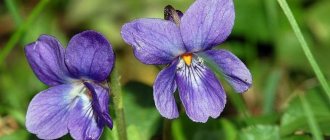Description of the herbaceous peony Primavera
This is a perennial plant that was bred by breeders in 1907 in France. The flower has gained popularity among gardeners all over the world in a short period of time.
Representatives of the Primavera variety reach a height of 90 cm. The plant has a thick and strong stem with one, or rarely several, inflorescences. The shoot is covered with numerous green lanceolate-shaped leaves. Despite the fact that the stem is strong, the plant needs a garter when growing, which allows the bush to give a neat appearance.
Peonies are among the light-loving flowers. However, the Primavera variety can also be grown in shaded areas. It is enough that a little sunlight falls on the plant during the day.
Despite the strong stems of the peony, it needs to be tied up
Important! When planted in a lighted area with fertile soil, the plant lives up to 20 years, and blooms regularly.
The peculiarity of the Primavera variety is its endurance to unfavorable conditions. It has good frost resistance, so they can be grown in any region, especially with a warm or temperate climate. Equally important is that “Primavera” is resistant to diseases common among other ornamental plants.
Features of flowering
Healthy bushes grow several stems. Single or, in rare cases, numerous inflorescences appear on each of them. They are large in size and reach 20 cm in diameter.
Anemone-type flowers. The lower petals are wide, growing in 1-2 rows. Those located higher have a narrow, short, rounded shape. This is explained by the fact that the Primavera variety was obtained by crossing terry and Japanese peony.
The color of the flowers is unique. In the middle the petals are yellowish, and those surrounding them are white or pinkish. The splendor of flowering depends on the age of the bush. Typically, the largest buds grow on peonies from five years old. Plants grown in soil for less than 2 years do not bloom.
The buds are pale cream or pale pink in color
The milky-flowering peony Primavera blooms mainly in late spring. If warming comes late, the deadline may shift to early summer. Flowering duration usually does not exceed 3 weeks.
Application in design
Peonies of the Primavera variety are often used for decorative purposes. They are used to decorate flower beds, borders and create flower arrangements. Due to its high growth, the Primavera variety is used to create hedges. But most often they are used as a central decoration, with other ornamental plants planted around them.
A flower arrangement with Primavera peonies will be well complemented by:
- white and yellow roses;
- lilies;
- phlox;
- chrysanthemums;
- asters;
- zinnias;
- petunias;
- nasturtiums
It is not recommended to grow the plant next to flowers from the Ranunculaceae family. They quickly deplete the soil, and their roots secrete enzymes that negatively affect other plants.
Important! Peonies of the Primavera variety are demanding on the composition of the soil. Therefore, they should only be grown in open areas and not in pots or flowerpots.
Peonies can decorate any flowerbed and garden plot
When composing flower arrangements, you should remember that peonies always occupy a dominant position. In addition, these are perennial bushes that love moisture and need a lot of space.
Additional Information
Peony ito hybrid Julia Rose: description, reviews, planting and care
Peony "Primavera" was introduced into cultivation back in 1907. The main credit goes to the French breeding school. Over the past 100 years, the variety has been mastered by gardeners all over the planet. When the buds fully open, their central part becomes as bright as possible. In this case, the appearance of the edges of the petals does not change.
When flowering is already waning, the plant turns white from top to bottom. The only measure to prepare the tubers themselves for planting is wetting them in a solution of potassium permanganate. The tubers are quite strong and do not require any other help.
Strong shading is very dangerous for this peony. However, the plant can be planted on the western side of the site. Protection from gusts of wind is most important in the first two seasons. You can speed up the development of the plant by planting it in the autumn months. Spring planting may cause the peony to start growing too early; The buds that do not have time to take root will fall off.
If you mulch Primavera, then only with a combination of equal amounts of peat and simple wood ash. However, a considerable part of flower growers do not use mulch at all. According to agronomists, such a measure is also optional. For winter cover of peonies use:
- spruce paws;
- old wooden boxes and boxes;
- sawdust;
- other suitable household products.
But as soon as the spring frosts end, the protective layer is immediately removed. Adult plants should be watered 2 or 3 times a week with 10–20 liters of water
Important: if the soil dries out very quickly, irrigation should occur more often. When fertilized soil was initially used, additional nutrients should be added only after three years. Peonies can be replanted in the fall; the working technology is approximately the same as for the initial planting
Peonies can be replanted in the fall; the working technology is approximately the same as during the initial planting.
The video explains how to properly replant peonies.
The herbaceous peony Primavera is characterized by its good adaptability to various conditions, so even a novice gardener can cope with its cultivation. A powerful bush of this variety looks great in single and group plantings. A spreading, tall peony with large double flowers will be a real decoration for a site decorated in any style.
Reproduction methods
The main method is dividing the bush. This option is suitable for specimens that have reached the age of 6-7 years. Choose a bush with several stems. They dig it up, divide the rhizome, after which each sprout is planted in a new, previously prepared place.
The bush can be propagated by division, carefully separating the tubers
Another propagation option is layering. To do this, choose a bush with several stems and cover them with a layer of fertile soil. The layer should reach 25-30 cm in height. In the summer after flowering, the hilled stems form root layers. Then they are cut and planted in fresh soil.
Landing rules
For Primavera peonies, you need to choose the right site. Well-lit areas protected from strong winds are best. Then the plant forms roots and develops faster.
Important! The recommended planting time is early autumn. In September, the peony adapts better to the conditions and subsequently tolerates wintering well.
It is better to plant a peony in autumn or spring before the buds open.
Spring planting is not recommended. This is explained by the fact that at this time of year the peony begins to form a shoot faster than the root system. Because of this, it becomes fragile and sensitive. The bush weakens and does not bloom in the future.
The key to success when growing peonies is proper planting. Having chosen a place, you need to prepare the soil. After this, you can send the seedling into the ground.
Landing algorithm:
- For each bush, dig a hole 50-60 cm deep and wide.
- Place a drainage layer of gravel, expanded clay or crushed stone at the bottom.
- Mix garden soil, half a bucket of humus, add 100 g of superphosphate.
- Fill the hole with the resulting mixture and cover it with a layer of mulch.
- Leave for 4-5 days.
- Dig a shallow hole, place the seedling, and bury it.
- The height of the soil layer above the tubers is no more than 6 cm.
Important! Primavera peonies should be planted in such a way that there is at least 70 cm of free space between each seedling.
When planting, seedlings need to be watered with a small amount of soft, settled water. In this case, you should make sure that the liquid is well absorbed and does not stagnate.
Growing a flower, how to plant it correctly in open ground
To grow healthy, abundantly flowering bushes, you need to follow certain simple rules.
Planting with root cuttings
Root cuttings are sections of the rhizome, 2-5 cm long. The cutting must contain at least 1 bud and root. Planting material is harvested in July-August.
The procedure is as follows:
- Carefully remove the rhizome from the ground.
- Divide the rhizome into cuttings.
- Disinfect the cuttings by soaking them for 2 hours in a pink solution of potassium permanganate.
- Dry the planting material, sprinkle the sections with crushed coal
- Plant the cuttings in the prepared holes at a distance of 15 cm from each other.
The plot with cuttings is shaded from the sun, regularly watered, weeded, and mulched for the winter. The first flowers on the plants will appear after 3 years.
Important! In the first two years after transplantation, all buds on the bush are cut off. This is done to stimulate the growth of the root system, which could ensure lush flowering.
What time does boarding take place?
The best time for planting peonies in open ground is considered to be the last week of August - the first week of September. When planting seedlings during this period, you can be sure that they will take root and form a good root system.
Selecting a location
Since the Ann Cousins peony grows in one place for up to 30 years and does not tolerate transplantation, the choice of its place of residence must be taken responsibly.
Main characteristics:
- open, sunny place;
- the soil is nutritious, loose;
- groundwater on the site should not be close;
- high-quality drainage must be ensured;
- absence of other perennials and buildings nearby.
Important! Ann Cousins peony will not bloom in the shade
How to prepare the soil and flower for planting
Preparing the landing site:
- Dig a hole 60 cm deep and 60 cm in diameter;
- Place at least 15 cm of drainage at the bottom. You can use pebbles, brick chips, and expanded clay.
- Place a layer of soil with humus on top of the drainage.
After 1-2 weeks you can plant a new bush.
Plant preparation:
- All stems of the selected plant are cut off.
- Carefully dig out the root system, trying not to damage the adventitious roots.
- The soil is removed from the roots so that the buds become visible.
- Adventitious roots are cut off, leaving 10-12 cm.
- Rotten, dried sections of rhizomes are removed by sprinkling the sections with crushed coal.
- The rhizome is divided into parts using pruning shears or a sharp knife so that each plot contains 2-3 developed buds and 2 adventitious roots.
Important! It is not recommended to divide or replant a plant younger than 3 years old.
Step by step landing procedure
Planting a peony is not difficult, but it is necessary to follow the algorithm.
Procedure:
- The rhizome section is placed in a prepared and well-watered hole.
- The upper bud is placed level with the ground surface.
- Fill the hole with soil, compacting it.
Finally, the planting site is mulched with hay and sawdust. Watered.
Aftercare
Representatives of the Primavera variety are considered unpretentious. However, in the first year after planting in open ground, they need careful care. It is recommended to tie up young bushes, as they can be damaged even by gentle winds.
Care also includes:
- Regular watering - 10 liters of settled water for each bush.
- Loosening the top layer of soil - once every 2-3 weeks to enrich the soil with oxygen.
- Systematic removal of weeds.
- Feeding the soil with complex fertilizers - every month before wintering.
In the spring, after the snow melts, fertilize with nitrogen-potassium fertilizers. Each bush requires 15-20 g of solution. The second feeding is after 2 months. Compositions with phosphorus and potassium are used. A similar procedure is repeated 2 weeks after flowering, when bud formation occurs.
It is better to plant the plant in loamy soil, in which water does not stagnate.
Adult bushes need to be watered once every 10 days. Each plant will require 20 liters of water. The soil is loosened once a month. Peat, straw or dry compost are used for mulching.
General principles of caring for different varieties of peonies:
Preparing for winter
A few weeks after flowering ends, you need to remove dried leaves from the bush. The remaining stems continue to be cared for until October. When they turn whitish and lose their freshness, they are also cut off.
Important! To prevent diseases, after removing dried leaves, treat the soil surface with fungicidal agents.
Despite its frost resistance, the plant must be covered with sawdust or spruce branches in the cold season
To strengthen the plant before wintering, you need to additionally fertilize the soil. Superphosphate is used for this. For 1 bush take 8 liters of warm water and 1 spoon of fertilizer. First, the flower is watered with ordinary liquid, then the solution is introduced.
Mature plants do not need shelter. They tolerate severe frosts well. Peonies up to 2 years old should be covered with sawdust mixed with peat after pruning.
What kind of variety is this
Peony Primavera was developed more than a century ago. Selection work was carried out by French specialists. They crossed a double peony and a Japanese peony. Primavera is still very popular among gardeners.
Peony lactiflora Primavera
Additional Information! Translated from Italian primavera means “spring”.
Description, characteristics
The shoots reach a height of 90 centimeters. Every year more and more of them grow on the bush. The leaves are large, painted with a dark green palette.
The tops of the shoots are crowned with flowers up to 20 centimeters in diameter. They are anemoid type. The lower petals are painted white or pale pink. The middle is light yellow.
The buds begin to bloom at the end of May. Flowering lasts about 3 weeks. Bushes can grow in one place for up to 20 years. The variety is frost-resistant; winter shelter is not required.
Advantages and disadvantages of the variety
The positive qualities of Primavera include:
- ease of care;
- early flowering periods;
- decorativeness;
- frost resistance;
- possibility of using flowers for cutting.
Negative qualities include average resistance to diseases and pests.
Use in landscape design
The herbaceous peony Primavera is planted singly, in composition with peonies of other varieties. It can be combined with roses, lilies, petunias, phlox, and asters. Peony is often decorated as a border or planted as a hedge.
Peony Primavera in landscape design
Pests and diseases
When growing Primavera peonies, gardeners may encounter certain difficulties. Despite its unpretentiousness and resistance to adverse conditions, such a plant can get sick. This is usually caused by violation of planting and care rules.
The most common problem is root rot. It appears due to excessive soil moisture. This occurs due to improper watering regime or due to stagnation of liquid. In such cases, it is necessary to regularly loosen the soil to improve the outflow of water.
Due to improper care, Primavera peonies may develop fungal diseases:
- powdery mildew;
- gray rot;
- late blight;
- Fusarium
To treat such diseases, damaged parts of the plant must be removed. Fungicides are also used that suppress pathogenic microorganisms.
Common pests of Primavera peonies include aphids, thrips and bronze beetles. During treatment, peonies during the growing season should be sprayed with Karbofos solution.
Bronze beetles can be removed from flowers by hand
Flower rhizomes can be attacked by nematodes. This is rare and is usually caused by other plants being nearby. In case of damage, the bush will have to be removed so that the worms do not spread to neighboring specimens.











